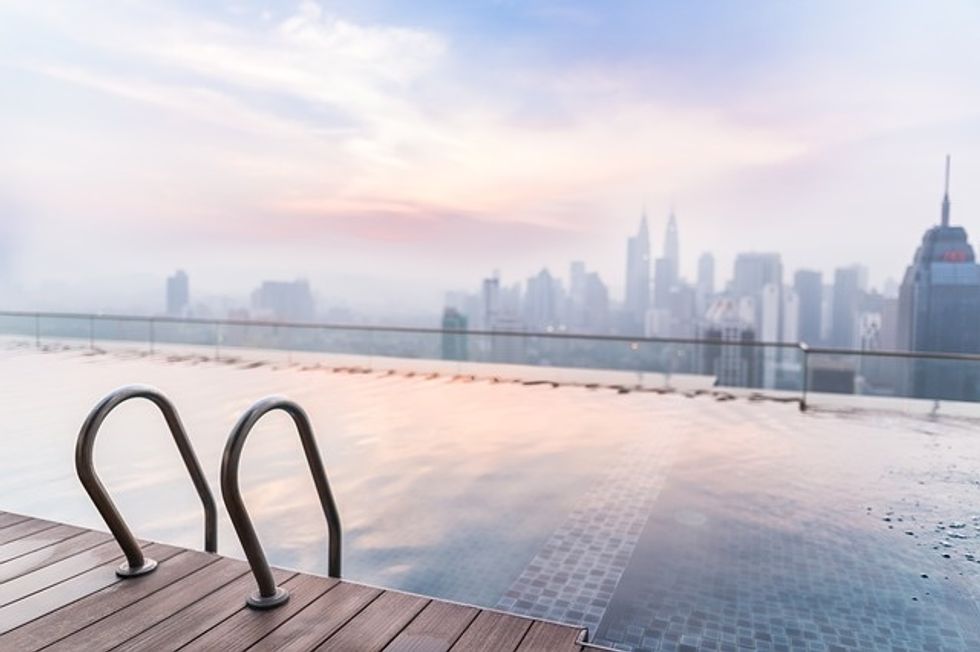A home pool has long been a pleasure most of us can afford, with a variety of sizes, designs and more. On the other hand, cleaning a home pool on a regular basis is essential for continued use, not to mention that cleaning the pool keeps our and our children safe from bacteria and dirt residues.
So here are some helpful tips and things to know about cleaning a home pool and keeping water quality in it over time.
Pool Cleaning - Why Is It Important?
Many of us have a swimming pool on the roof, in the yard and even on the terrace, such as an indoor pool, Bestway pools, etc., some of which are large and require constant care and cleanliness. However, in a shared swim, the pool users can transfer infectious bacteria through rock or foot fungi, including bacteria that are present on the human body. These bacteria can cause the transmission of diseases, diarrhea, skin infections, eyes and ears.
Unlike a public swimming pool, there is no supervision of the cleanliness of a swimming pool, which may cause a health hazard for the bathers and, on the other hand, aesthetic hazards. Therefore, it is important to know how you can take care of yourself in your home swimming pool and how to maintain water quality.
What equipment is needed to clean a home pool?
Pool cover - Covering the pond while not in use will prevent leaves, sand, dust and pests from entering the pond.
Network - If you managed to sneak into the pond or a simple mesh leaves you will be able to get them and keep the pool clean.
Robot - There is a robot that works independently and cleans the bottom of the pool. Rubbing, sweeping and scrubbing the bottom of the pool.
Water filtration and purification - There are non-chemical means of cleaning the pond, using biological means such as plants or other systems will save the use of chlorine or other chemical means. In case there is a special sensitivity to these chemicals.
Chlorine - Use of chlorine to clean pool water is the most common option. In private pools, a correct dosage should be made between the amount of chlorine and the size of the pool and the amount of water in it.
Electric suction cleaner - does a job similar to a robot. Thoroughly cleans the bottom of the pool. Effective in sand extraction or cleaning of leaves and insects that sank to the bottom of the pond. For the list of best suction pool heater visit here.
Skimmer - a system installed on the edge of the pool and sucking dirt into it, similar to the operation of the home vacuum cleaner. After several sessions empty the container to which the dirt is collected.
Equipment for cleaning of domestic swimming pools
Water Quality Test
In any professional pool store you can purchase a water test kit. You need to keep the pH level in the pool constant. According to the tests you will know exactly what is missing in the pool or if there is excess in the pool, such as the PH level.
For more information about maintaining proper PH level in a swimming pool, we recommend that you read the following article on pool maintenance.
Stick for water testing
The first stage of cleaning - removing the dirt
The pool must be cleaned with a net to remove the floating debris collected in the pool, as well as dedicated ground cleaners designed to clean the sediments at the bottom of the pond.
Vacuum cleaner for cleaning pools
In addition, the accumulation of oily dirt on the walls can encourage green development, which is certainly undesirable neither health wise nor aesthetically. It is highly recommended to purchase material that prevents the development and accumulation of green water in general.
The second stage is cleaning - chlorine and purifying the water
Once you have cleaned your home pool from dirt, it is important to prevent the bacteria from developing in the water. You need to have a suitable chlorine level in the pool. Too little chlorine will not prevent the development of infections. Too much chlorine can harm the health of bathers in the pool. A chlorine buoy is the best way. This allows you to insert an accurate amount of tablets according to the pool size. Sometimes you need to add an unusually large amount of chlorine to the pool to "shock" the water. This is necessary mainly after rain or heavy use of the pool.
Beyond chlorine, you can also use a liquid for purification of water designated for swimming pools whose purpose is to eliminate the small bacteria. In addition, you can also purchase a fluid to prevent clogging of the filters in the cleaning accessories section of our pool.
Careful use of detergents Chemicals for pool cleaning, along with other means, will reduce the need for frequent water changes. At the same time, it is recommended that the water be changed completely after checking the cleanliness of the water in the pool using the relevant equipment.
Additional pool cleaning tips
As a general rule, it is always recommended to cover the pool with a professional pool cover while the pool is not in use, to prevent dirt from accumulating in the water. After you have removed the cover and before the cleaning phase itself, it is important to check the quality of the water regularly, by a special kit to help you understand what materials should be added to the water and how much.
Please note that some pools require special treatment depending on the material from which the walls and bottom of the pool are made. Therefore, it is recommended to check with the manufacturer the instructions for cleaning the pool according to the type of pool.
Also note that even in pools without a filter, the water should be replaced more frequently, which can increase the price of holding the pond for the long term.
In the upper pools there is no need to fill the pool with water again. When properly used in pumps and pool and chlorine filters, the same water can be used for up to three seasons without replacement. When emptying the pool, water can be used to irrigate the garden. Since the pool is a temporary building, there is no need to obtain building permits or to pay any taxes or levies.
Pool cleaning filter
You can build a pool in a paved courtyard or on a lawn, in a parking lot, on the roof or even in the basement.
It is recommended to place it in the area exposed to the sun only about half of the day, a situation that will save disinfectants and significantly reduce the amount of bacteria in water. If you want to put the pool on the roof of the building or on the balcony, check with the help of a building engineer that the structure will be able to withstand the weight of the water generated by the pool. Uncertain about the size of the pool? Take into account leaving a free space that will allow the environment to pass.
In outdoor garden pools, the side support area should also be calculated. Do not forget: next to each garden pool should be electrical and water points. It is important to ensure adequate protection,



 Christmas and New Year gift card
Photo by
Christmas and New Year gift card
Photo by  butter cookies on plate
Photo by
butter cookies on plate
Photo by  boy holding Holy
boy holding Holy 







